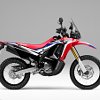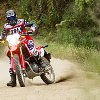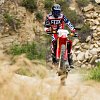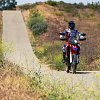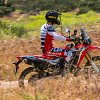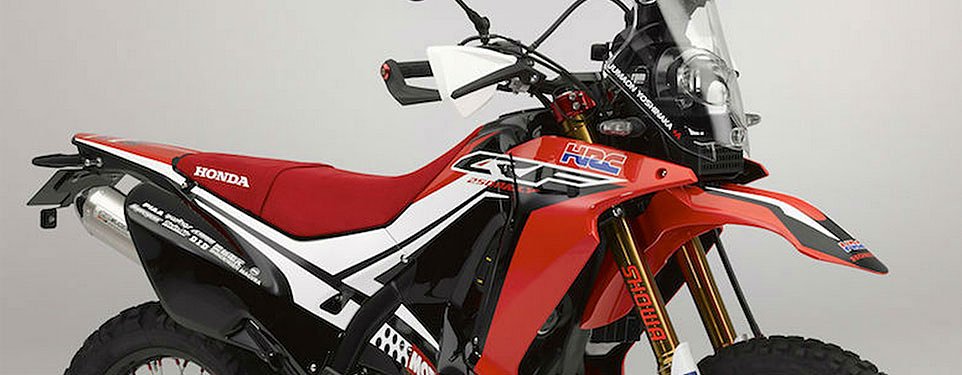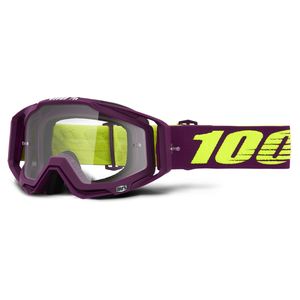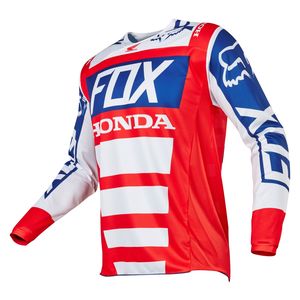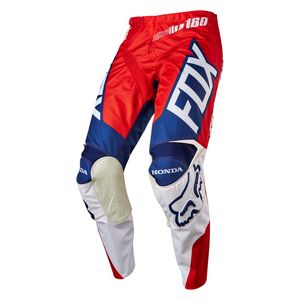Rolling through the residential streets of Lake Elsinore, California, gave me a flashback of something I knew I was too young to have been a part of, yet I couldn’t place what I was feeling. Then a young boy with a huge smile on his face pointed at me as I rolled through an intersection. I acknowledged him and pointed back. That’s when it hit me: It’s 1970 and I’m Harvey Mushman (aka Steve McQueen) competing in the Lake Elsinore Grand Prix. While McQueen always tried to be incognito at the races, people still recognized and pointed when he lined up, especially at the GP, which was immortalized in the 1971 documentary “On Any Sunday.”
This was a nice jolt of confidence, considering I had a serious case of the jitters when the day started two hours earlier, staring down a row of a couple dozen shiny red 2017 Honda CRF250L and CRF250L Rally motorcycles. With two men I admired looking on — veteran motorcycle journalist Chris Jonnum and 11-time Baja 1000 champion Johnny Campbell — I was trying to tiptoe my bike down Campbell’s chunky gravel driveway without falling over. Beyond Campbell’s home and race shop in the hills of Murrieta, California, was 120 miles of riding on a wide mix of terrain: street, dirt, sandy and rocky washed-out fire roads carved into cliffs, one-lane twisty paths and a whole lot of climbing and descending. Should I mention to these guys that I have not ridden a dirt bike in over 11 years?
Nah.

You might now be asking, “Who the hell invited this guy to a press intro?” It’s a valid inquiry, but I accepted the invitation because I wanted to know what types of motorcycles are available for riders returning from long periods away from two wheels. I also wondered – because I get asked often by friends – what’s the best bike for a first-time motorcyclist? Honda’s small-displacement dual-sport line definitely deserves consideration and, after riding them, it’s easy to see why the standard 250L sold 4,000 units in 2016.
I spent 15 years racing motocross before going to college. I even competed against a kid named Ricky Carmichael. Well, let’s rephrase that. I was on the same track as Ricky Carmichael. He usually won and I was happy if he didn’t lap me. After college, I drifted away from riding, save for the occasional opportunity to test a street bike. So I’m coming into this Honda 250L test with my beginner goggles on.

Riding the Honda CRF250L Rally


We start on a winding mountain road above Lake Elsinore and immediately I notice how smooth everything is. The clutch is easy and the power rolls on gently. The engine is quiet and the 296 mm front rotor is large enough that I only need one finger on the brake for the entire ride (and we encountered some stout descents).
Within a few miles, I already have an answer for my handful of friends who have expressed interest in learning to ride a motorcycle and may want to wander off the pavement onto forest or other unpaved trails: The 250L models might be the most unintimidating street-legal motorcycles I’ve ever ridden (and I’ve experienced the wrath of a Vincent Black Shadow). I couldn’t tell that I wasn’t on a street-specific bike. Even when the breeze kicked up and tried to turn my scrawny 138-pound frame into a wind sail, the bike cut through the gusts and I wasn’t pushed around the road.

The trails above the Southern California basin known as the Inland Empire showed the wear and erosion of a very wet winter and the rain ruts, rocks and sand bars did their best to trip up the bikes. Racing motocross on two-strokes, it was always so important to be in the right gear and keep the bikes “on the pipe.” On the 250L, I never actually knew what gear I was in, but it never really seemed to matter; the motor generally chugged successfully through whatever element I was in.
The one area where I did struggle was the deep sand. The words of my father — “when in doubt, gas it” — came in handy, because when the front end tried to buckle, a little bit of throttle helped me escape washing out. Obviously, Brabec’s factory Honda rally bike is set up for the most extreme conditions, but after battling my way through some rough terrain, I thought of the men and women who compete in those events. They deserve massive amounts of respect.
One area where both bikes fall short for off-road riding is the suspension package. It was too soft for seriously challenging terrain, but if that’s what you plan on doing then this isn’t the bike to buy. Honda has several advanced models for those planning to spend their time riding more extreme terrain.
Before riding the Honda 250L Rally, I had never experienced anti-lock brakes on a motorcycle. Maybe the feature has been on a street bike I tried, but I don’t recall hitting the brakes hard enough to try them out. The first time the ABS kicked in was on a steep, rocky descent with big erosion ruts and the water of Lake Elsinore in full panoramic view about 1,000 feet below me. Scared might be a strong term, because the bike stayed in the line I wanted and I never felt like I was in any danger, but it gave me a very brief feeling that I suddenly didn’t have any brakes at all. The rear ABS can be turned off with an easily accessible button, but the front system is always on. I got used to the feeling and determined that the ABS probably saved my skin.
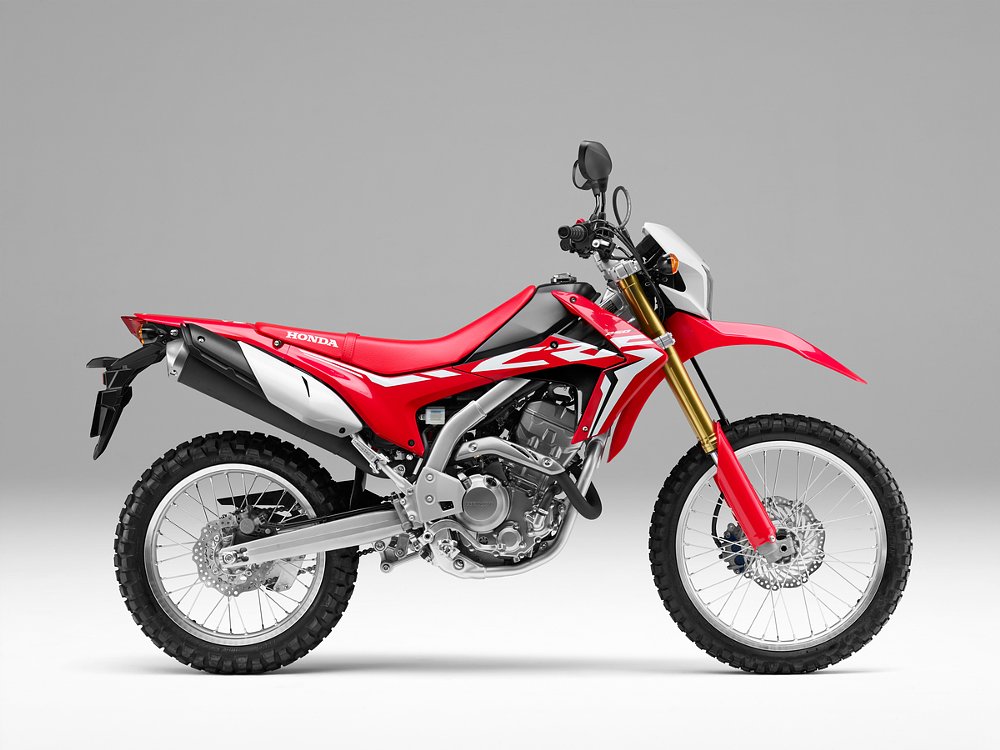
Riding the Honda CRF250L
After a lunch stop, I switched over to the standard 250L, which has a slightly shorter wheelbase (56.9 inches vs. 57.3 inches) a seat height of 34.4 inches (vs. 35.2 inches on the Rally model) and was lighter by 30 pounds. Its suspension package also has about one inch less travel overall. I immediately noticed the height difference between the bikes. I’m five feet, 10 inches tall and I was flat-footed with a bend in my knees. The difference in weight was noticeable, too, and the front end felt considerably lighter (though it still isn’t wheelie-prone, which is actually a good thing for new riders).

When I met up with photographer Adam Booth on a dirt climb, he pumped some confidence into me and suggested I slide through some corners for his camera. Coasting second gear into a right hander with a shallow sandy berm, I feathered the clutch and cracked open the throttle. In my head, I was Johnny Campbell exiting Ensenada, Mexico, in a two-wheel drift, determined to win another Baja 1000. Booth took a great photo, but the digital evidence proved I wasn’t quite as sideways as I felt l was. Still, it was fun to try and the bike didn’t mind a little high-rpm play riding.

Final thoughts
A friend recently asked me if he should buy a café racer or a scrambler for his first-ever motorcycle. At the time, I immediately told him, “Neither. Get a Honda XR250 and learn to ride first.”
I’d like to retract that advice. Get a Honda CRF250L (or a Rally if you want that ADV look and feel without the massive powerplant). It’s economical (starting at $5,149). It won’t win any bike night awards, but it will turn anyone (except, perhaps, those who are short) into a confident and comfortable rider, whether that’s a first-time bike owner or someone returning after a long time away from two wheels.
In the end, I felt like I never took a break from riding motorcycles in the dirt and I got to pretend I was both Steve McQueen and Johnny Campbell all on one bike. That’s a pretty damn good day of riding.
| Honda CRF250L/CRF250L Rally | |
|---|---|
| Engine type | 249.6cc liquid-cooled single-cylinder four-stroke |
| Bore x stroke | 76 mm x 55 mm |
| Compression ratio | 10.7:1 |
| Transmission | Six-speed |
| Front suspension | 43 mm inverted fork; 11.0 inches travel (9.8 inches for CRF250L) |
| Rear suspension | Pro-Link single shock with spring; 10.3 inches travel (9.4 inches for CRF250L) |
| Front brake | Single 296 mm (256 mm on CRF250L) disc with twin-piston caliper |
| Rear brake | Single 220 mm disc |
| Front tire | 3.00-21 |
| Rear tire | 120/80-18 |
| Trail | 114 mm (113 mm for CRF250L) |
| Wheelbase | 57.3 inches (56.9 inches for CRF250L) |
| Seat height | 35.2 inches (34.4 inches for CRF250L) |
| Curb weight | 341.7 pounds (317.5 pounds for CRF250L) |
| Fuel capacity | 2.7 gallons (2.1 gallons for CRF250L) |
| Ground clearance | 10.6 inches (10.0 inches for CRF250L) |






